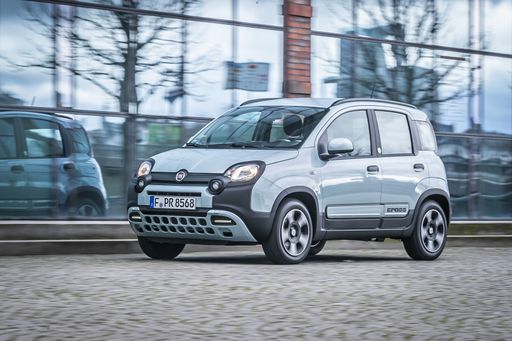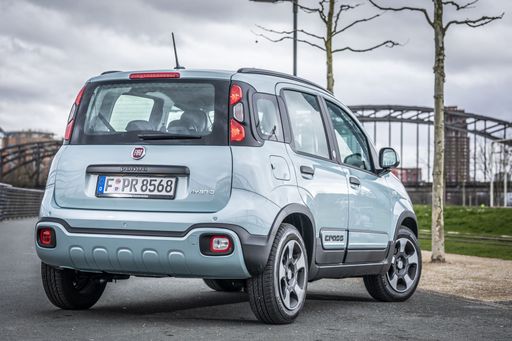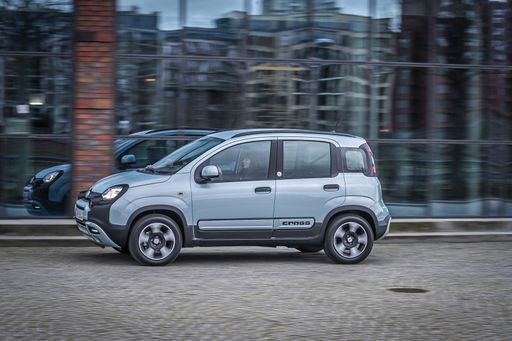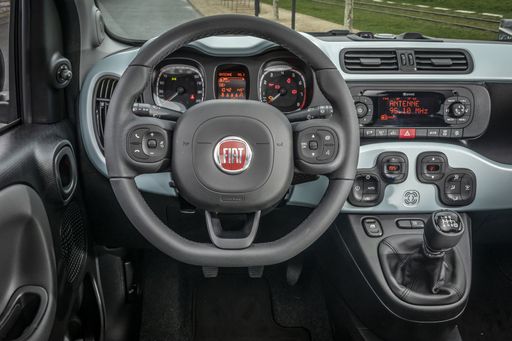Fiat Panda vs Renault R4 – Performance, range & efficiency compared
Compare performance, boot capacity, efficiency and price at a glance.
Find out which car is the better choice for you – Fiat Panda or Renault R4?
Here’s where it gets real: The technical differences in detail
Costs and Efficiency: Price and efficiency are key factors when choosing a car – and this is often where the real differences emerge.
Fiat Panda has a decisively advantage in terms of price – it starts at 14100 £, while the Renault R4 costs 25200 £. That’s a price difference of around 11066 £.
Engine and Performance: Power, torque and acceleration are the classic benchmarks for car enthusiasts – and here, some clear differences start to show.
When it comes to engine power, the Renault R4 has a significantly edge – offering 150 HP compared to 70 HP. That’s roughly 80 HP more horsepower.
In acceleration from 0 to 100 km/h, the Renault R4 is clearly quicker – completing the sprint in 8.20 s, while the Fiat Panda takes 13.90 s. That’s about 5.70 s faster.
In terms of top speed, the Fiat Panda performs minimal better – reaching 164 km/h, while the Renault R4 tops out at 150 km/h. The difference is around 14 km/h.
There’s also a difference in torque: the Renault R4 pulls clearly stronger with 245 Nm compared to 92 Nm. That’s about 153 Nm difference.
Space and Everyday Use: Whether family car or daily driver – which one offers more room, flexibility and comfort?
Seats: Renault R4 offers a bit more seating capacity – 5 vs 4.
In curb weight, the Fiat Panda is significantly lighter – 1055 kg compared to 1485 kg. The difference is around 430 kg.
In terms of boot space, the Renault R4 offers decisively more room – 420 L compared to 225 L. That’s a difference of about 195 L.
In maximum load capacity, the Renault R4 performs noticeable better – up to 1405 L, which is about 535 L more than the Fiat Panda.
When it comes to payload, Renault R4 a bit takes the win – 443 kg compared to 365 kg. That’s a difference of about 78 kg.
Our conclusion: The Renault R4 proves to be outperforms in nearly all aspects and thus becomes our DriveDuel Champion!
Overall, Renault R4 is the better all-rounder in this comparison.
Fiat Panda
The Fiat Panda is a compact city car that brilliantly combines practical design and efficient functionality. Its boxy shape provides ample interior space and visibility, making it a favourite among urban drivers. With its reputation for reliability and affordability, the Panda continues to be a top choice for those seeking a no-frills, dependable vehicle.
details @ media.stellantis.com
@ media.stellantis.com
 @ media.stellantis.com
@ media.stellantis.com
 @ media.stellantis.com
@ media.stellantis.com
 @ media.stellantis.com
@ media.stellantis.com
Renault R4
The Renault R4, affectionately known as the "R4," is a quintessential symbol of French automotive simplicity and practicality. This classic compact car, originally introduced in the early 1960s, won over numerous enthusiasts with its versatile design and dependable performance. Its no-frills charm and robust build made it a beloved choice for rural drivers and city dwellers alike, cementing its status as an iconic piece of automotive history.
details

|
|
|
|
|
Costs and Consumption |
|
|---|---|
|
Price
14100 £
|
Price
25200 - 31200 £
|
|
Consumption L/100km
5 L
|
Consumption L/100km
-
|
|
Consumption kWh/100km
-
|
Consumption kWh/100km
14.2 - 15.1 kWh
|
|
Electric Range
-
|
Electric Range
308 - 409 km
|
|
Battery Capacity
-
|
Battery Capacity
40 - 52 kWh
|
|
co2
113 g/km
|
co2
0 g/km
|
|
Fuel tank capacity
38 L
|
Fuel tank capacity
-
|
Dimensions and Body |
|
|---|---|
|
Body Type
Hatchback
|
Body Type
SUV
|
|
Seats
4
|
Seats
5
|
|
Doors
5
|
Doors
5
|
|
Curb weight
1055 kg
|
Curb weight
1485 - 1537 kg
|
|
Trunk capacity
225 L
|
Trunk capacity
420 L
|
|
Length
3635 mm
|
Length
4144 mm
|
|
Width
1643 mm
|
Width
1808 mm
|
|
Height
1551 mm
|
Height
1552 mm
|
|
Max trunk capacity
870 L
|
Max trunk capacity
1405 L
|
|
Payload
365 kg
|
Payload
410 - 443 kg
|
Engine and Performance |
|
|---|---|
|
Engine Type
Petrol MHEV
|
Engine Type
Electric
|
|
Transmission
Manuel
|
Transmission
Automatic
|
|
Transmission Detail
Manual Gearbox
|
Transmission Detail
Reduction Gearbox
|
|
Drive Type
Front-Wheel Drive
|
Drive Type
Front-Wheel Drive
|
|
Power HP
70 HP
|
Power HP
122 - 150 HP
|
|
Acceleration 0-100km/h
13.90 s
|
Acceleration 0-100km/h
8.2 - 9.2 s
|
|
Max Speed
164 km/h
|
Max Speed
150 km/h
|
|
Torque
92 Nm
|
Torque
225 - 245 Nm
|
|
Number of Cylinders
3
|
Number of Cylinders
-
|
|
Power kW
51 kW
|
Power kW
90 - 110 kW
|
|
Engine capacity
999 cm3
|
Engine capacity
-
|
General |
|
|---|---|
|
Model Year
2024
|
Model Year
2025
|
|
CO2 Efficiency Class
C
|
CO2 Efficiency Class
A
|
|
Brand
Fiat
|
Brand
Renault
|
Is the Fiat Panda offered with different drivetrains?
Available configurations include Front-Wheel Drive.
The prices and data displayed are estimates based on German list prices and may vary by country. This information is not legally binding.
